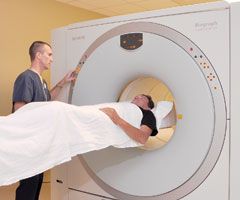Epilepsy and Seizure Disorder
Understanding Epilepsy and Seizures
Abnormal electrical activity in the brain can cause seizures, and when these seizures are repeated this condition is called epilepsy. A person is diagnosed with epilepsy when they have had two or more seizures within 24 hours. A seizure lasts from a few seconds to a few minutes depending on the type of seizure.
Epilepsy is one of several types of seizure disorders. Patients with epilepsy may experience more than one seizure type because seizures are only symptoms. Therefore, the neurologist must diagnose the type of epilepsy, not just the type(s) of seizure. These disorders can cause a variety of symptoms, depending on which parts of the brain are involved, and require certain treatment.
Seizure Signs and Symptoms:
- Staring
- Jerking movements of the arms and legs
- Stiffening of the body
- Loss of consciousness or awareness.
- Breathing problems or stopping breathing
- Loss of bowel or bladder control
Diagnosis
A person who has experienced a seizure should be seen by their health care provider immediately, The physician will need to take a closer look at what is going on so they may order several tests for evaluation. These tests help determine the cause of the seizure and evaluate how likely it is that another one will occur. Tests may include:
- Neurological Exam
- Blood Tests
- Lumbar Puncture
- Electroencephalogram (EEG)
- Imaging tests such as
Learn more here about Neurodiagnostic Procedures and Testing
Types of Epilepsy and Seizures
Epilepsy isn't one disease or condition, all types of epilepsy have seizures as a symptom. There are many kinds of epilepsy with different symptoms and patterns. These categories help describe the onset of a seizure, a person's awareness, and physical movements.
Generalized Onset:
Generalized seizures affect both sides of the brain. They cause the body to move in ways you can't control, stare into space, or do the same movements repeatedly.
Focal Onset:
Focal seizures are located in just one area of the brain. These seizures can cause twitching or a change in sensation, confusion, becoming unresponsive, and can even transition to a generalized seizure.
Combination Generalized and Focal:
Combination seizures have both generalized and focal symptoms.
Unknown Onset:
Unknown onset seizures are when the beginning of a seizure is not known. Physicians can be sure that a person has epilepsy, but they don't know whether the seizures are focal or generalized. As more information is learned about the seizures the type can change.
What Causes Epilepsy and Seizures
Anything that disrupts the communication pathways to the brain can lead to a seizure. However, just because someone has had a seizure does not mean they have epilepsy. Seizures can be caused by other health conditions like low blood sugar, fever, brain tumors, or even alcohol/drug withdrawal. Causes can range from minor health conditions to more serious problems, that is why it is important to see your physician if you experience any of these symptoms.
Treatment
Seizures and epilepsy symptoms can be easily managed by the use of medications, dietary therapy, or in more severe cases surgery.
The type of treatment prescribed will depend on several factors, including the frequency and severity of the seizures, as well as the person's age, overall health, and medical history.
The Epilepsy Monitoring Unit (EMU) at this time is for pediatric patients only. Learn more by clicking below!
-
Epilepsy Monitoring Unit (EMU)
The Epilepsy Monitoring Unit (EMU) is designed to help diagnose and treat epilepsy. The unit will help physicians determine if your child has epilepsy or another neurological disorder. Learn more about our services here!
What to Do When Someone Has a Seizure
Witnessing a seizure can be frightening and cannot be stopped once it has started. It is important to remember to remain calm and it will stop on their own. Some first aid steps you can take for someone experiencing a seizure are:
- Clear hard or sharp objects away from the person.
- Don't try to hold them down or stop the movements.
- Place them on their side, to help keep their airway clear.
- Look at your watch at the start of the seizure, to time its length.
A seizure is considered an emergency when it lasts a long time or when seizures occur close together and the person doesn't recover between seizures. Call 911 if the person has difficulty breathing, waking after the seizure, or if the seizure lasts longer than 5 minutes.
Call us today to find out more information about your treatment options, to schedule a consultation or to make an appointment.
-
Lee Health Neurology
Are you looking for pediatric neurology services? Please click below.
-
Pediatric Neurology - Golisano Children's Health Center
-
Golisano Pediatric Neurology - Women & Children's Medical Plaza




